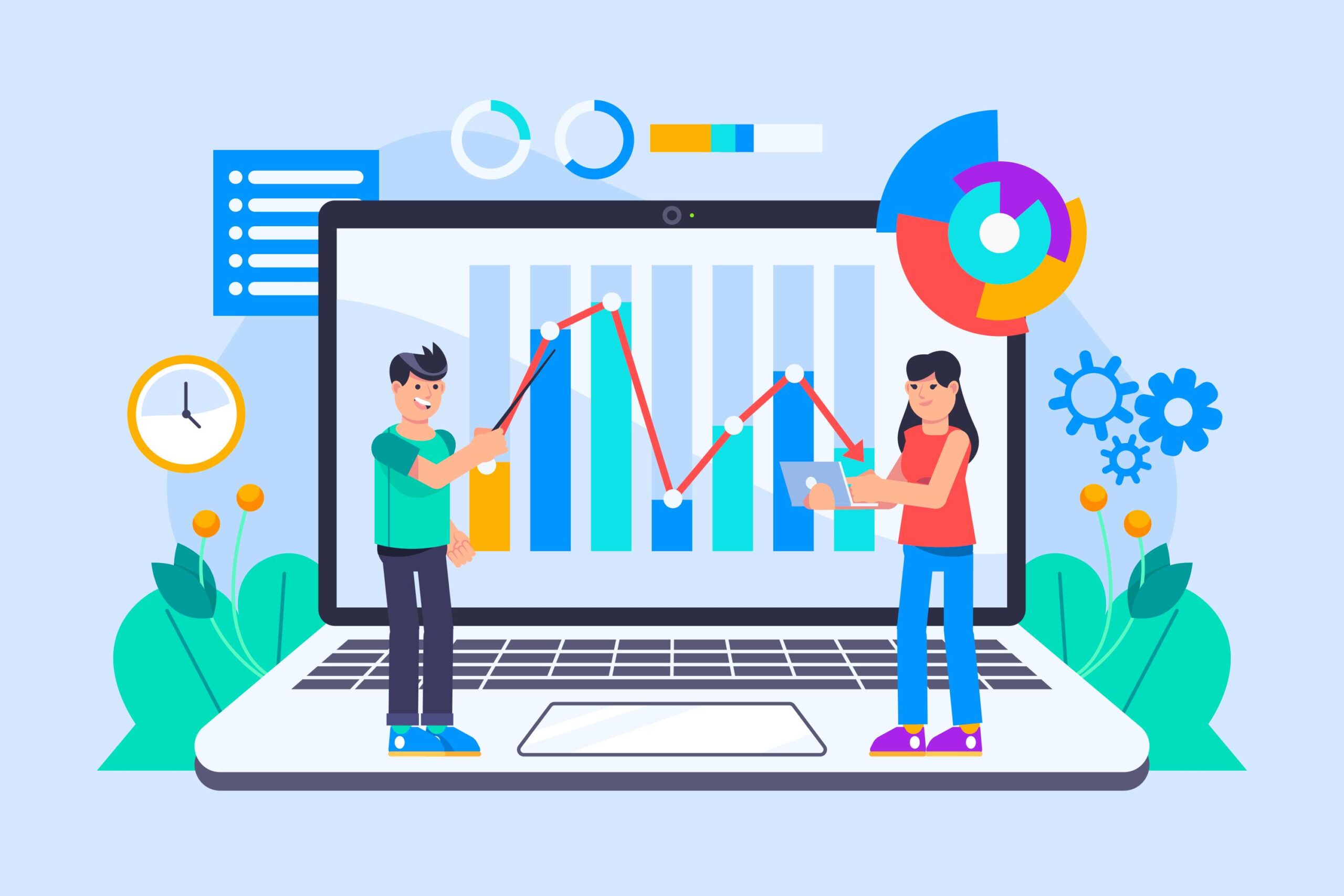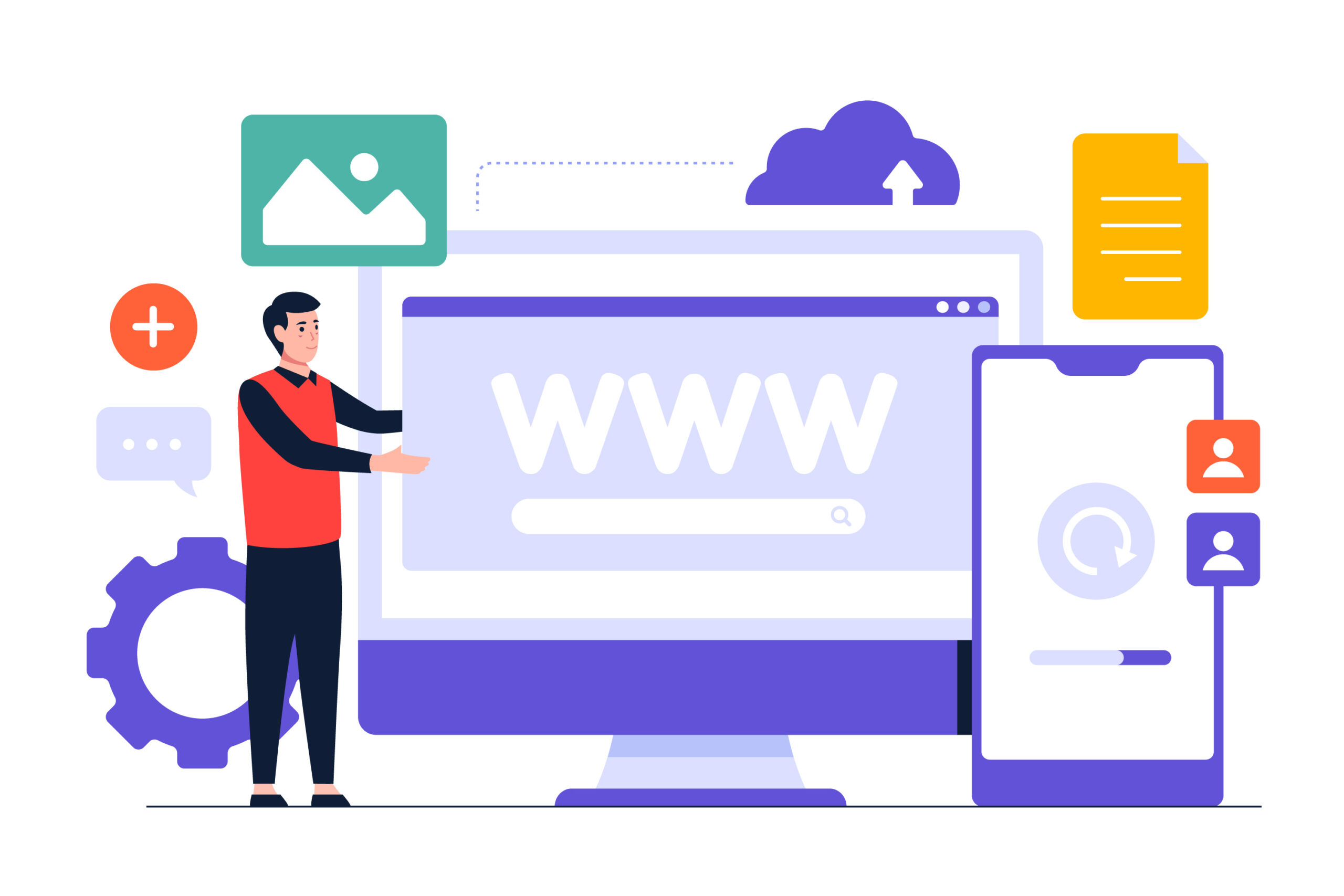Website traffic, commonly known as “traffic,” serves as a fundamental metric in the digital world, acting as a lifeline for websites aiming to achieve visibility, engagement, and profitability.
What Is Website Traffic?
Definition
Website traffic refers to the total number of users who visit and interact with a website over a given period. This encompasses a variety of measurable data points, such as page views (the number of times a page is loaded), unique visitors (distinct individuals accessing the site), session duration (how long users stay), and bounce rates (the percentage of users leaving after viewing only one page). Traffic acts as a barometer of a website’s performance, indicating its reach, popularity, and ability to engage an audience.
For example, a website might record 10,000 page views in a month, with 3,000 unique visitors averaging two minutes per session. These metrics reveal not just how many people arrive but also how they behave once there. Traffic differs across websites based on their niche, target audience, and promotional efforts. A high-traffic site gains widespread recognition, potentially leading to monetization avenues like ad revenue, affiliate partnerships, or e-commerce sales. By tracking traffic, you can identify which pages attract users, which keywords drive searches, and how to refine your strategy.
Five Core Types of Traffic
Traffic originates from multiple sources, each with distinct characteristics and implications for your website’s growth.
Below are the five primary types:
Referral Traffic
This type of traffic comes from external websites linking to yours, excluding search engine results. Imagine a popular blog featuring a hyperlink to your article, or a forum post directing users to your site. When someone clicks that link, it’s counted as referral traffic. This source often reflects your site’s authority and networking strength, as other platforms deem your content worth sharing.
Social Traffic
Generated from social media platforms such as Facebook, Instagram, X (formerly Twitter), or LinkedIn, social traffic arises when users click links in posts, stories, or ads. For instance, sharing a blog post on your Facebook page or running an Instagram ad campaign can drive this traffic. In 2025, with social media’s pervasive influence, this source is prized for its quality and high conversion rates, especially when amplified by influencers or viral content.
Direct Traffic
This occurs when users deliberately access your site by typing its URL into their browser or clicking a saved bookmark. Suppose someone remembers your brand, “AwesomeGear.com,” and enters it directly. That’s direct traffic, signaling strong brand awareness or customer loyalty. It’s a valuable metric, as it shows users actively seeking you out without intermediaries.
Organic Traffic
Stemming from unpaid search engine results, organic traffic is earned when users find your site through queries on Google, Bing, or other engines. For example, searching “best budget laptops” and clicking your non-ad result counts as organic traffic. This type is highly coveted for its sustainability, relying on search engine optimization (SEO) rather than ongoing costs.
Paid Traffic
This results from paid advertisements, such as Google Ads, Facebook Ads, or sponsored posts on X. If you invest $100 in a Google Ads campaign targeting “fitness trackers,” the resulting clicks are paid traffic. While it demands financial input, this method delivers immediate, targeted visitors, offering a shortcut to conversions when organic growth is slow.
Each traffic type has strengths and trade-offs. Organic traffic builds a solid foundation over time, while paid traffic provides rapid scalability. Referral and social traffic hinge on external partnerships, and direct traffic reflects brand equity. Understanding these nuances allows you to diversify your approach.
What Is Potential Traffic?
Definition
Potential traffic represents the estimated number of visitors a specific keyword or piece of content could bring to your website if optimized effectively. It’s a forward-looking metric, capturing the traffic you might expect based on search demand and user behavior. Different keywords carry different potential traffic volumes, making this a key indicator for prioritizing digital efforts. For instance, a broad term like “shoes” might promise more potential traffic than a niche phrase like “vegan leather boots,” but competition and intent also play roles. Knowing your potential traffic helps shape content creation, SEO campaigns, and advertising budgets.
How to Calculate Potential Traffic
Estimating potential traffic involves a straightforward, two-step process:
- Determine Monthly Search Volume: Begin by researching how often a keyword is searched each month. Tools like Ahrefs’ Keyword Explorer (Ahrefs) or Google Keyword Planner provide this data. Suppose “healthy meal plans” has 20,000 monthly searches. That’s your starting figure.
- Calculate Click-Through Rate (CTR): Next, estimate the percentage of searchers who will click your link, which depends on your SERP position. A 2023 Backlinko study found the top Google result averages a 28.5% CTR, dropping to 15.7% for position two. For “healthy meal plans” at position one, multiply 20,000 by 0.285 to get 5,700 potential visits per month. At position three (CTR ~10%), it’s 2,000 visits.
This calculation is an approximation, as actual CTR varies with meta titles, descriptions, and user intent. Still, it’s a practical way to assess opportunities and set realistic goals. Regularly revisiting these estimates ensures your strategy aligns with current trends.
Why Website Traffic Matters
Traffic isn’t merely a number—it’s a catalyst for growth across multiple dimensions. Here’s a why it is important for your website’s growth:
1. Building Brand Influence
A website with substantial traffic demonstrates its ability to attract and retain an audience, laying the groundwork for brand recognition. When thousands visit monthly, your content’s quality and relevance shine through, positioning you as a trusted voice. Individuals leverage this to build personal brands—think bloggers or thought leaders—while businesses use it to establish market presence. Investing in traffic growth amplifies your influence, provided your content is valuable, accurate, and engaging enough to keep users lingering.
2. Boosting Website Rankings
Search engines like Google and Bing factor traffic into their ranking algorithms, viewing it as a sign of a site’s utility and popularity. A site drawing 50,000 monthly visitors is likely more authoritative than one with 500, earning it higher SERP placements. These top spots increase visibility, driving even more traffic in a self-reinforcing loop. Improving traffic thus directly enhances your site’s search engine standing, making it a priority for long-term success.
3. Increasing Conversion Rates
Traffic volume creates opportunities to turn visitors into actionable outcomes—purchases, sign-ups, or inquiries. A site with 10,000 monthly visitors and a 2% conversion rate yields 200 conversions, far outpacing a 1,000-visitor site. When traffic is steady and intent-driven (e.g., users searching “buy organic coffee”), compelling content seals the deal. Quality traffic, not just quantity, is the key to maximizing this metric.
4. Enhancing Ad Campaign Effectiveness
For businesses, websites are digital storefronts, and ads are the signage drawing customers in. Spending on campaigns—say, $500 on Google Ads—aims to generate traffic that converts into leads or sales. A high-performing campaign might deliver 1,000 targeted visitors, with 50 becoming customers, yielding a strong ROI. Traffic quality determines ad success, making it essential to refine targeting and content alignment.
5. Driving Sales Revenue
Traffic with purchase intent directly fuels revenue. When users search “best wireless earbuds,” land on your site, and buy after reading a detailed review, that’s traffic at work. High-potential traffic boosts conversions, and satisfied buyers often return, creating a loyal customer base. A site averaging 5,000 intent-driven visitors monthly could see sales soar, especially with optimized calls-to-action.
Factors That Improve Website Traffic
Several controllable elements can elevate your traffic. Here’s an in-depth look at the most impactful:
1. Keyword System
Keywords are the conduits linking user searches to your site. A robust keyword system involves ongoing research to identify terms your audience uses, such as “affordable yoga mats” or “DIY home decor ideas.” Tools like Keyword Tool reveal search volumes and competition levels. Categorize keywords into primary (high-volume, broad) and secondary (niche, specific) groups, then assess their conversion potential. Planning content or ads around these terms ensures your site captures organic traffic effectively.
2. Content Quality
Traffic’s ultimate goal is conversion, and quality content is the vehicle. Articles, videos, or infographics that solve problems, answer questions, or entertain keep users engaged longer, reducing bounce rates and signaling value to search engines. Google’s algorithms, refined by 2025, prioritize content depth and relevance, rewarding it with higher rankings. Adding internal links to related pages enhances user experience and boosts overall site authority, amplifying traffic potential.
3. Off-Page Signals
While on-page efforts build your site internally, off-page signals amplify it externally. Backlinks from reputable sites (e.g., a tech blog linking to your gadget review) drive referral traffic and bolster credibility. Mentions by influencers or experts on social platforms like X further this effect, encouraging users to visit. These signals increase backlink quality and volume, a proven traffic enhancer in SEO.
Simple Ways to Increase Website Traffic
Boosting traffic requires a mix of creativity and strategy. Here are six detailed, actionable methods:
1. Search Engine Optimization (SEO)
SEO optimizes your site for search engines, improving its discoverability. In 2025, with online activity at an all-time high, ranking for terms like “best travel destinations” is a competitive edge. Research keywords with tools like Ahrefs, optimize on-page elements (titles, headers, meta descriptions), and build off-page authority via backlinks. A well-SEO’d site might jump from page three to page one, doubling its organic traffic. Explore Moz’s Beginner’s Guide to SEO (Moz) for a deep dive.
2. Leverage Social Media Influence
Social media platforms are traffic powerhouses. Posting a link to your latest blog on X or a product teaser on Instagram drives social traffic instantly. Joining relevant groups—like a fitness community on Facebook—and sharing valuable content can yield hundreds of clicks. A celebrity retweet or influencer shoutout might push this into thousands, with conversions following suit. Consistency and engagement are key to tapping this source.
3. Invest in Paid Advertising
Paid ads deliver fast, targeted traffic. Platforms like Google Ads or Meta Ads let you bid on keywords or demographics—think “25-34-year-old fitness enthusiasts in California.” A $200 campaign might generate 800 clicks, with precise targeting ensuring quality. Set clear objectives (e.g., 50 sales) to avoid wasting resources, and monitor results to refine future spends.
4. Build a Blog
Blogs remain a traffic magnet. Users gravitate toward personal narratives, how-to guides, or visually rich posts—like “My Journey to Minimalism” with stunning photos. A blog with 50 keyword-optimized articles increases your chances of ranking across multiple terms, drawing organic traffic. Regular updates give visitors reasons to return, building a loyal audience over time.
5. Email Marketing
Email campaigns drive traffic with precision. Craft a concise, eye-catching email—perhaps a newsletter with a “Read More” link to your site—and send it to your subscriber list. A 1,000-person list with a 20% click rate yields 200 visits. Tools like Mailchimp streamline design and tracking, making this a cost-effective tactic.
6. Video Marketing
Video dominates in 2025, catering to users who prefer watching over reading. A YouTube tutorial on “How to Bake Sourdough” or a livestream Q&A can embed links to your site, funneling viewers there. High-quality production—clear audio, engaging visuals—keeps viewers hooked, boosting click-throughs. A single viral video could drive thousands of visits overnight.
Tools to Measure Website Traffic
Accurate measurement is vital for traffic management. Below is a translated and detailed table summarizing key tools, followed by in-depth descriptions:
| Tool | Free/Paid | Main Functions | Advantages |
| Google Analytics | Free | Analyzes traffic sources, behavior, conversions | Google-integrated, detailed, user-friendly |
| Ahrefs | Paid | Analyzes keywords, organic traffic, backlinks | Deep data, advanced SEO support |
| Keyword Tool | Both | Researches keywords, search volume | Simple interface, accurate |
| SimilarWeb | Both | Compares traffic, sources, countries, sectors | Competitor analysis, comprehensive |
1. Google Analytics
Google Analytics is the go-to free tool for traffic insights. It tracks organic, direct, and referral traffic daily, weekly, or monthly, alongside demographics like age and location. Access Acquisition > All Traffic > Channels to see a source breakdown. Its integration with Google products makes it indispensable for beginners and pros alike.
2. Ahrefs
Ahrefs, a premium tool, excels at SEO-driven traffic analysis. Enter a URL into Site Explorer for organic traffic and backlink data, or a keyword into Keyword Explorer for volume and difficulty metrics. Its depth—covering competitor insights and keyword trends—makes it a favorite among marketers, though it requires a subscription.
3. Keyword Tool
Keyword Tool focuses on keyword research, offering search volumes, trending terms, and competition levels. Type “digital marketing tips” to see its 10,000 monthly searches and related phrases. Its free version suits small projects, while the paid tier adds precision, appealing to growing sites.
4. SimilarWeb
SimilarWeb provides a panoramic view of traffic, detailing sources (e.g., 30% from the US), industry benchmarks, and ad performance. It’s more comprehensive than Ahrefs for competitor analysis, with free and paid options. Use it to spy on rivals or refine your global strategy.
Conclusion
Website traffic is the heartbeat of online achievement, reflecting a site’s ability to attract, engage, and convert visitors. In 2025, mastering traffic means adapting to AI search trends, social shifts, and user expectations.
Start today, optimize your site, experiment with these tactics, and watch your digital presence soar.




